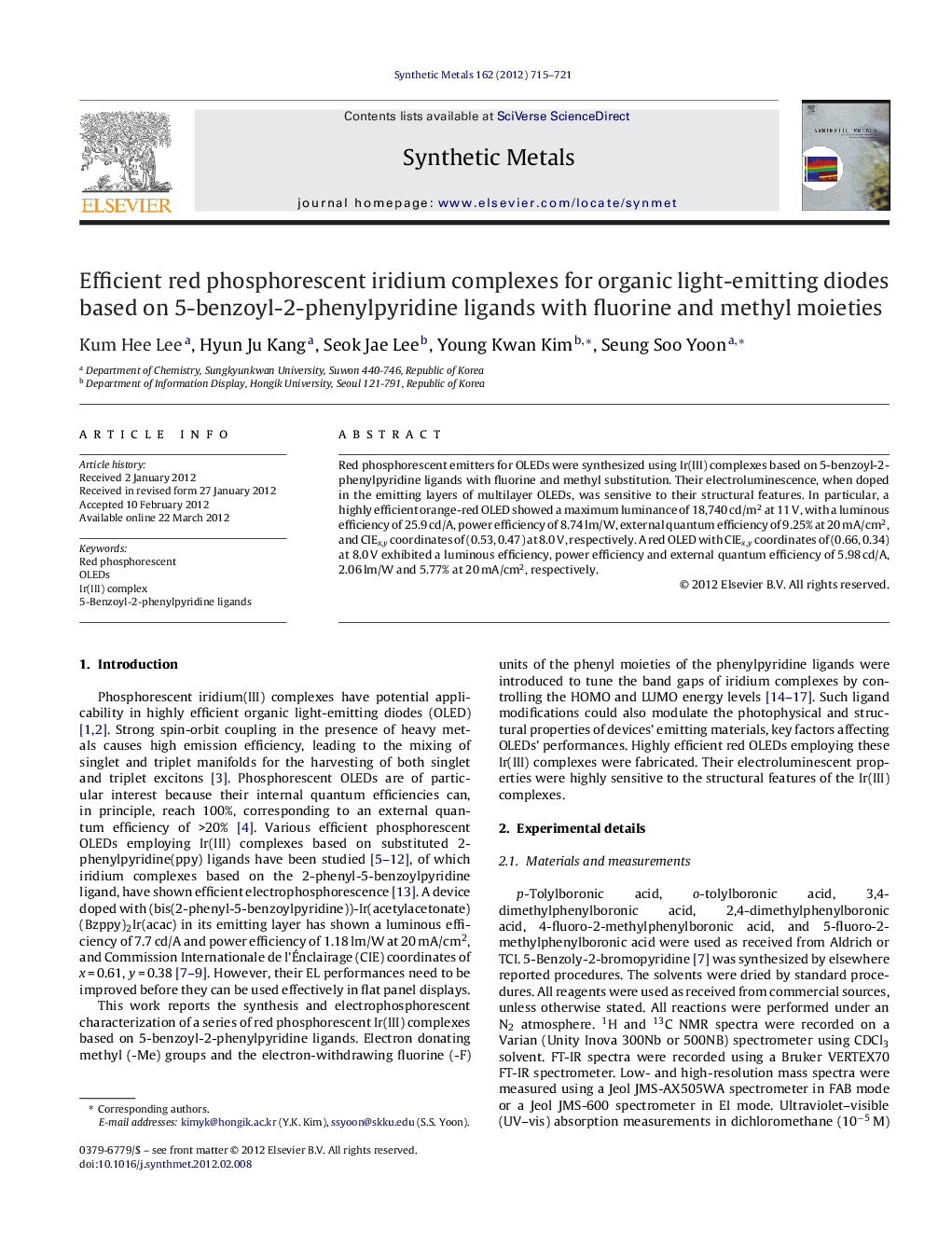| Article ID | Journal | Published Year | Pages | File Type |
|---|---|---|---|---|
| 1441932 | Synthetic Metals | 2012 | 7 Pages |
Red phosphorescent emitters for OLEDs were synthesized using Ir(III) complexes based on 5-benzoyl-2-phenylpyridine ligands with fluorine and methyl substitution. Their electroluminescence, when doped in the emitting layers of multilayer OLEDs, was sensitive to their structural features. In particular, a highly efficient orange-red OLED showed a maximum luminance of 18,740 cd/m2 at 11 V, with a luminous efficiency of 25.9 cd/A, power efficiency of 8.74 lm/W, external quantum efficiency of 9.25% at 20 mA/cm2, and CIEx,y coordinates of (0.53, 0.47) at 8.0 V, respectively. A red OLED with CIEx,y coordinates of (0.66, 0.34) at 8.0 V exhibited a luminous efficiency, power efficiency and external quantum efficiency of 5.98 cd/A, 2.06 lm/W and 5.77% at 20 mA/cm2, respectively.
Graphical abstractFigure optionsDownload full-size imageDownload as PowerPoint slideHighlights► We develop Ir complexes with 5-benzoyl-2-phenylpyridine derivatives as ligands. ► We examine changes in fluorine and methyl groups in the phenyl moiety. ► These fluorine and methyl groups allow tuning of the band gap of Ir complexes, leading to improved color purity.
